Museum of Army Music
The museum was housed at Kneller Hall until its closure. Its exhibits included historic musical instruments which had been used in military bands over the years, some of which developed into the instruments in use today while others, such as the serpent and ophicleide, were sent off to the land of obscurity as better inventions came along to replace them.
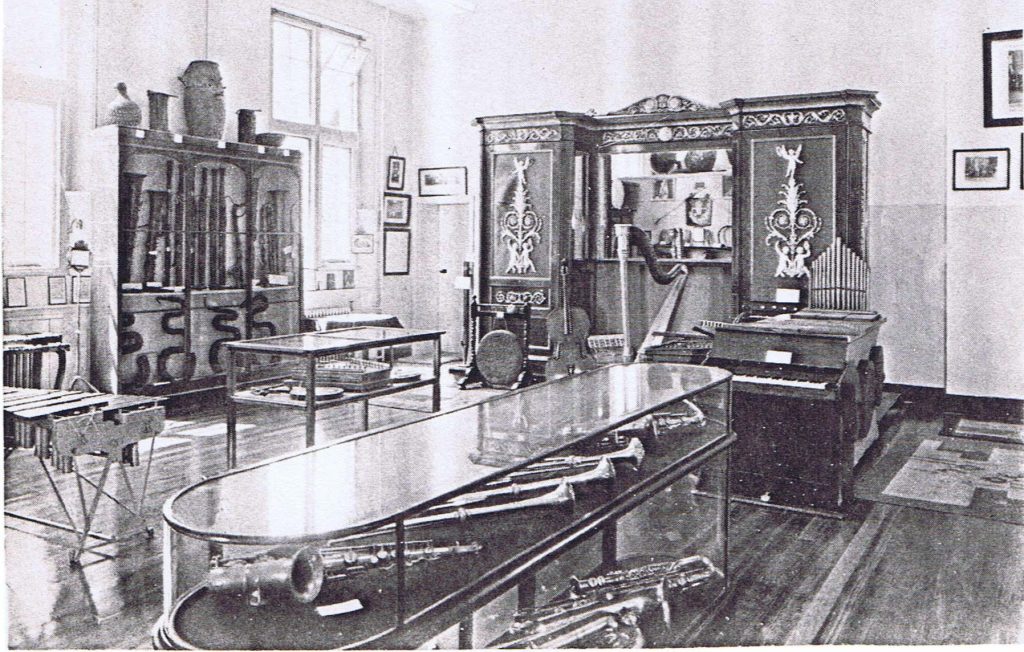
We know that by the 1930s a number of these instruments were displayed in cases within the office of the Director of Music. After the school returned from Aldershot following the war there was clearly a wish to make the collection more visible and the Kneller Hall diary records that:
- 1st March 1949: The School Museum was started in the room opposite the officers’ dining room.
- 27th September 1950: The School Museum was transferred to a hut in the professors’ boxes area.
The man who was chiefly responsible for the development of the museum was Lieutenant Colonel Rodney Bashford OBE, Grenadier Guards, starting from his tenure as the School Bandmaster in the 1950s and continuing through his time as the school’s Director of Music until shortly before his death in 1997.
The exhibits and archives are currently in storage pending a decision as to the future, but it is hoped that the museum will soon resume the aims to preserve and display the great heritage of military music in the Army.
Unlike the Drummers, Pipers and Buglers, the military band has no role in the Infantry’s communication system, although bandsmen in the cavalry also act as Trumpeters. The military band evolved primarily for the entertainment of the soldiers and as an enhancement to ceremonial. Shortly before his death in 1685, King Charles II authorised the addition of hautboys (a French word meaning high-woods, an early form of oboe) to what is now the Grenadier Guards, which means that the band can proudly claim to have been ‘born’ in the same year as Bach and Handel.
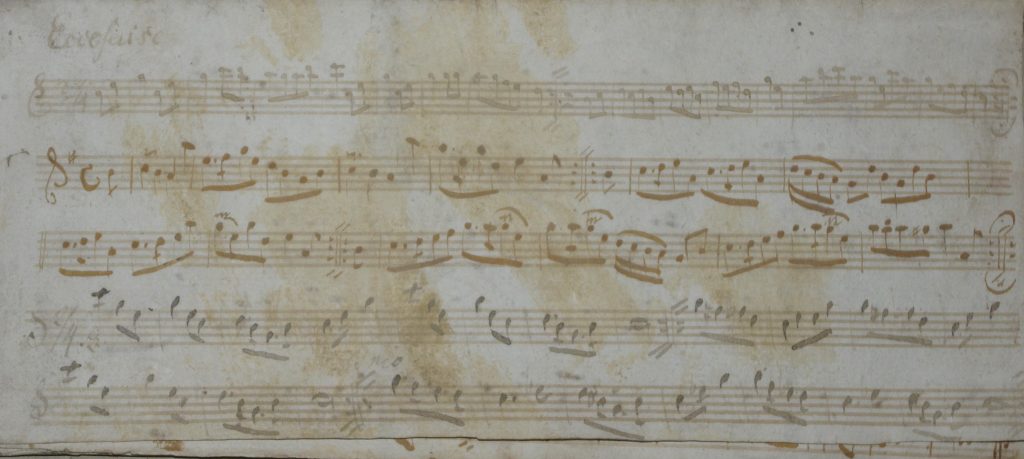
The rather coarse sound of the hautboys was soon replaced by the combination used in the Prussian armies, known as Harmonie Musick and comprising two clarinets, two oboes, two (natural) horns and two bassoons.
The sound of the military band broadly mirrored the development of new instruments as they were invented. The serpent was added to provide the bass line, making it the forerunner of the modern tuba. Flutes, trombones and trumpets were added and the range of the latter was enhanced by the addition of keys, slides and, eventually, valves, to enable the brass instrument to play a full chromatic scale and thus be able to play the melodies.
Finally, the saxophones were added in the late 19th century to complete the military band instrumentation of today.
Instrumental Artefacts
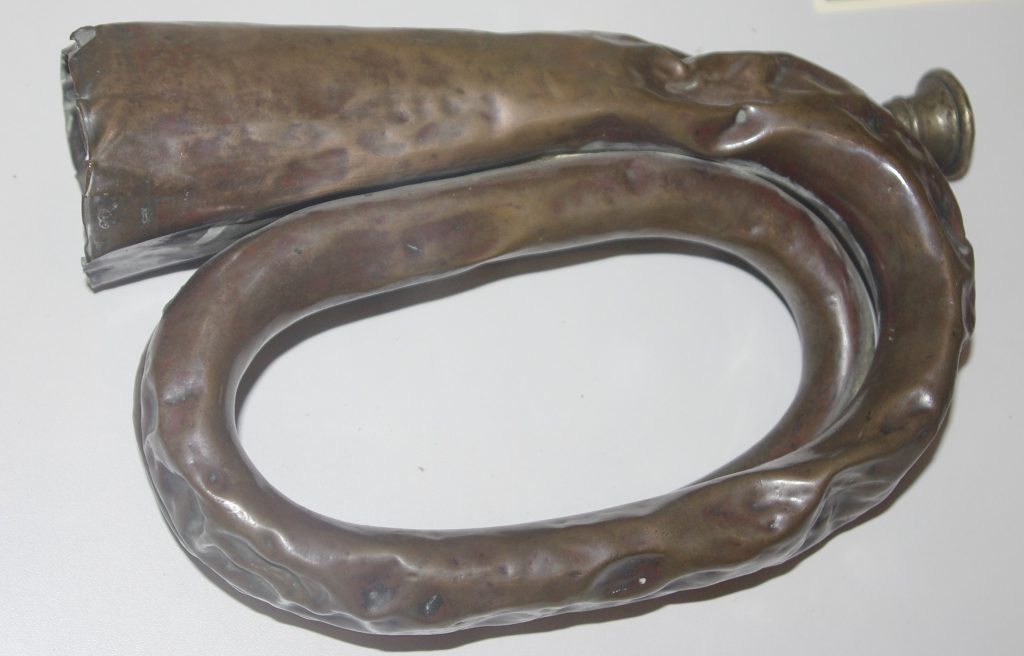
A bugle believed to have been sounded at the Battle of Waterloo on 18th June 1815. In June 2015 Lance Corporal Nick Walkley of the Band of the Welsh Guards used this bugle to sound Last Post at Beating Retreat by the Household Division on Horse Guards Parade, to mark the 200th Anniversary of the battle.
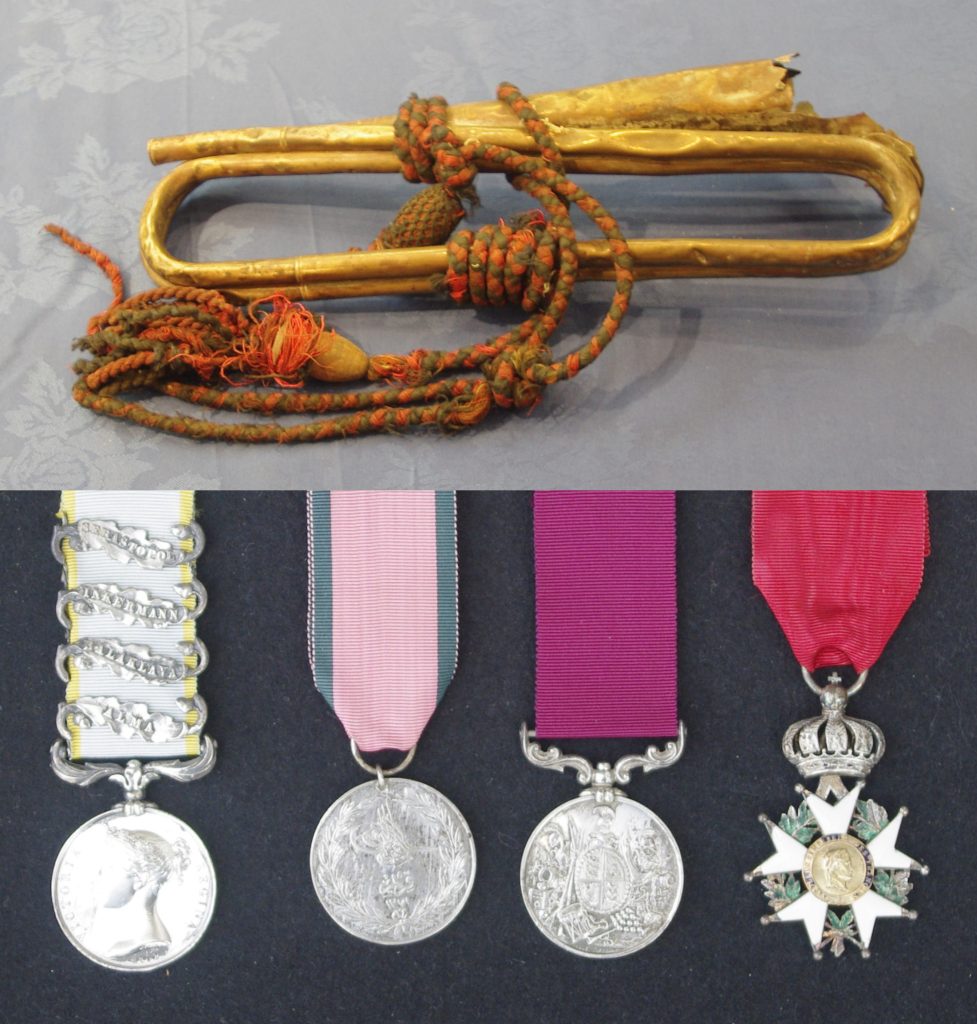
The trumpet carried by Trumpet Major Gray of the 8th Hussars, at the Charge of the Light Brigade in 1854, together with his medals.
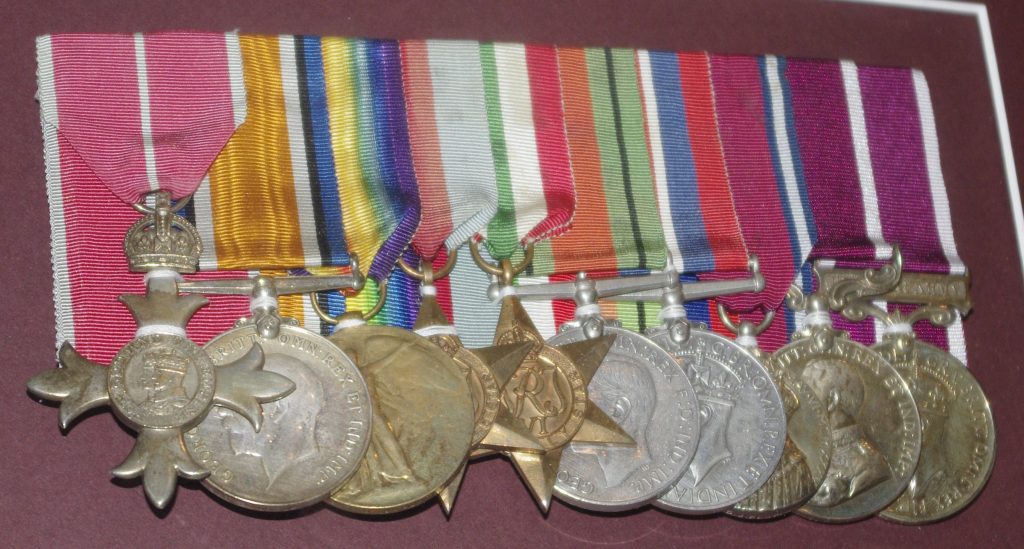
The medals of Major Denis Plater MBE, one of the Army’s finest composers of marches. Unusually, this group includes two Long Service and Good Conduct Medals, issued during different reigns.
